Art Exploration of the Month: “Balık Kavağa Çıkınca” (When Pigs Fly)
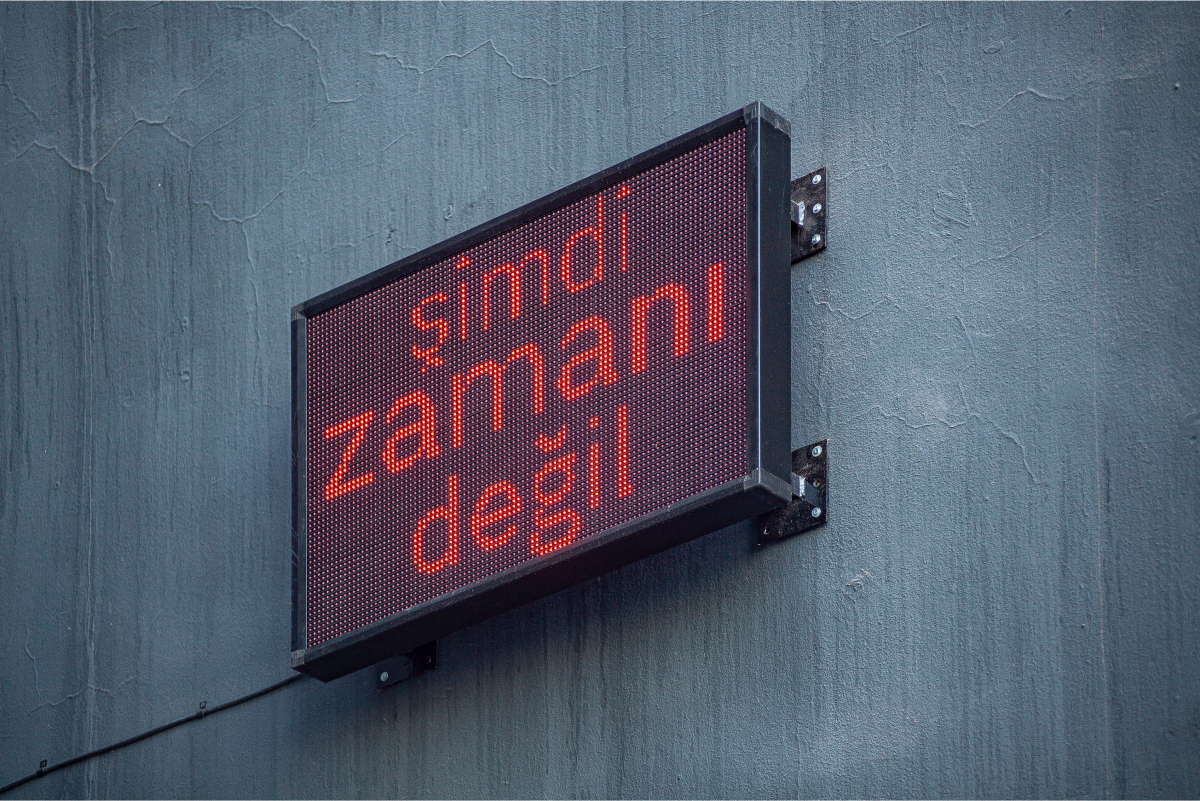
Balık Kavağa Çıkınca (When Pigs Fly), April 2023. Photo: Flufoto, by courtesy of Yanköşe.
“In this mood of ambiguity, Balık Kavağa Çıkınca (When Pigs Fly) traces the temporal expressions embedded in language and renders them visible by bringing them together.” (Cansu Cürgen, Avşar Gürpınar)
Have you been to Kabataş recently? While heading to the tram or the ferry, did you happen to notice a wall adorned with LED screens along Meclis-i Mebusan Street? Perhaps you’ve wondered about it, attempted to read the writings on the LEDs, took a selfie in front of the wall, or maybe you’ve come across images of this spot-on social media or in culture and arts publications. Hitit Mod features the Yanköşe project in its Art Exploration of the Month section.
The “Yanköşe” project, unexpectedly connecting urbanites with contemporary art, is named after the wall of the Kahve Dünyası coffee shop chain’s Kabataş branch. Since 2017, this wall has been hosting two different public contemporary art projects each year, on a non-profit basis under the Kahve Dünyası brand. Yanköşe serves as a platform for artists who create unexpected and experimental contemporary artworks. So far, artists such as Nermin Er, Özlem Günyol & Mustafa Kunt, SO? Architecture and Ideas, Vahit Tuna, Ali Cabbar, Tomokazu Matsuyama, No More Lies, and Bilal Yılmaz have contributed to the project. The works of the invited artists, employing different techniques and methods, tailored to the space’s characteristics and responding to the environment, reach thousands of people daily during their exhibitions.
|
Balık Kavağa Çıkınca (When Pigs Fly), April 2023. Photo: Flufoto, by courtesy of Yanköşe. |
When determining the works to be included in Yanköşe, Tuna Ortaylı Kazıcı, the project coordinator, initially invites three artists to contribute. Subsequently, the Selection Committee, consisting of Dilara Altınkılıç Kutmangil, Kaan Altınkılıç, Evrim Altuğ, Bülent Erkmen, and Fatoş Üstek, evaluates the projects proposed by the artists, considering factors such as content, visuality, and their relationship with the city.
Yanköşe, positioned to become a significant meeting space in a bustling and prominent part of the city, is currently hosting its ninth edition until October 2023. The exhibition “Balık Kavağa Çıkınca” (When Pigs Fly) by Cansu Cürgen and Avşar Gürpınar, which commenced on April 15th, provides a unique perspective on time, presenting daily fragments and ambiguous expressions on LED screens.
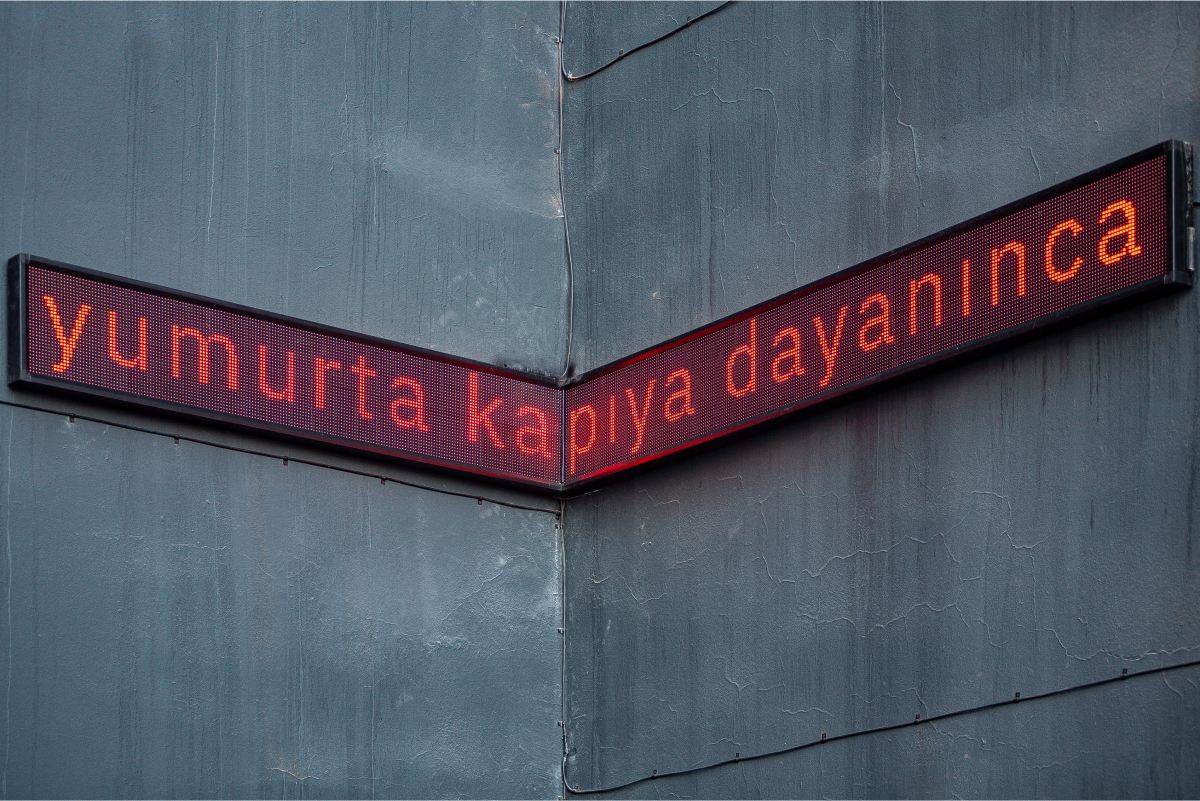 |
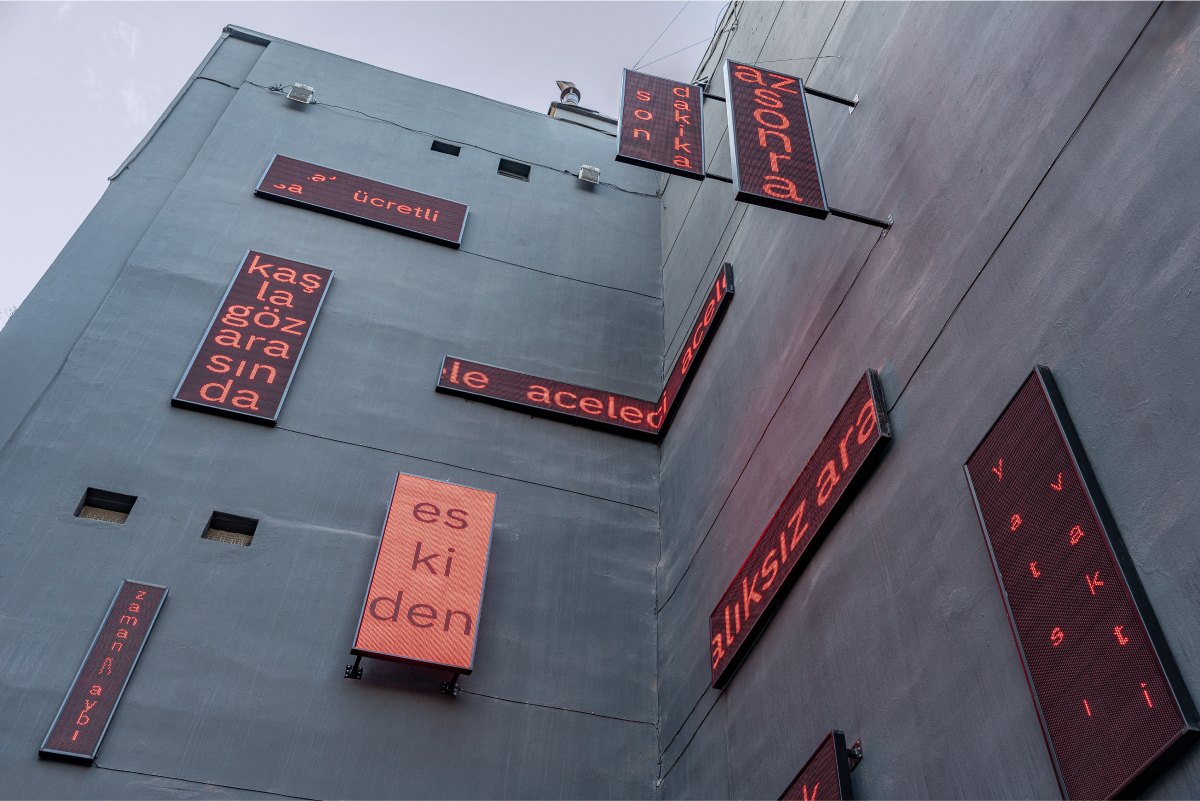 |
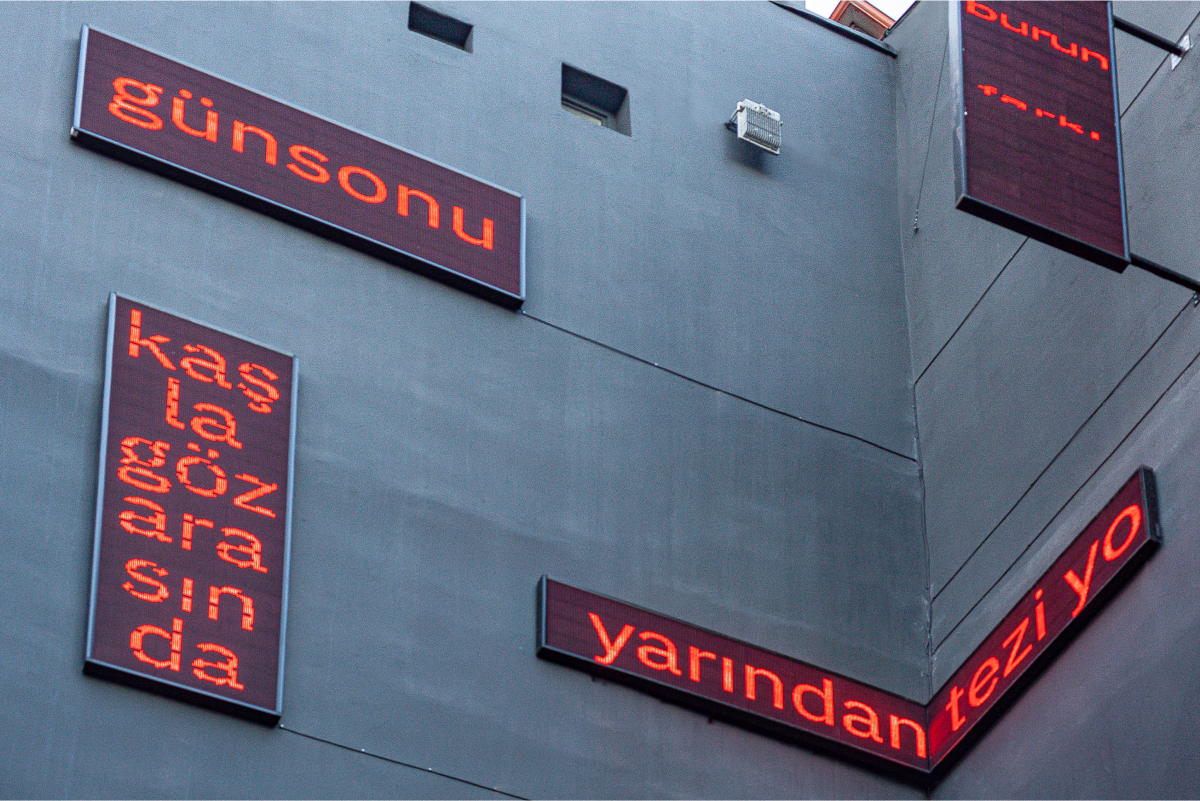 |
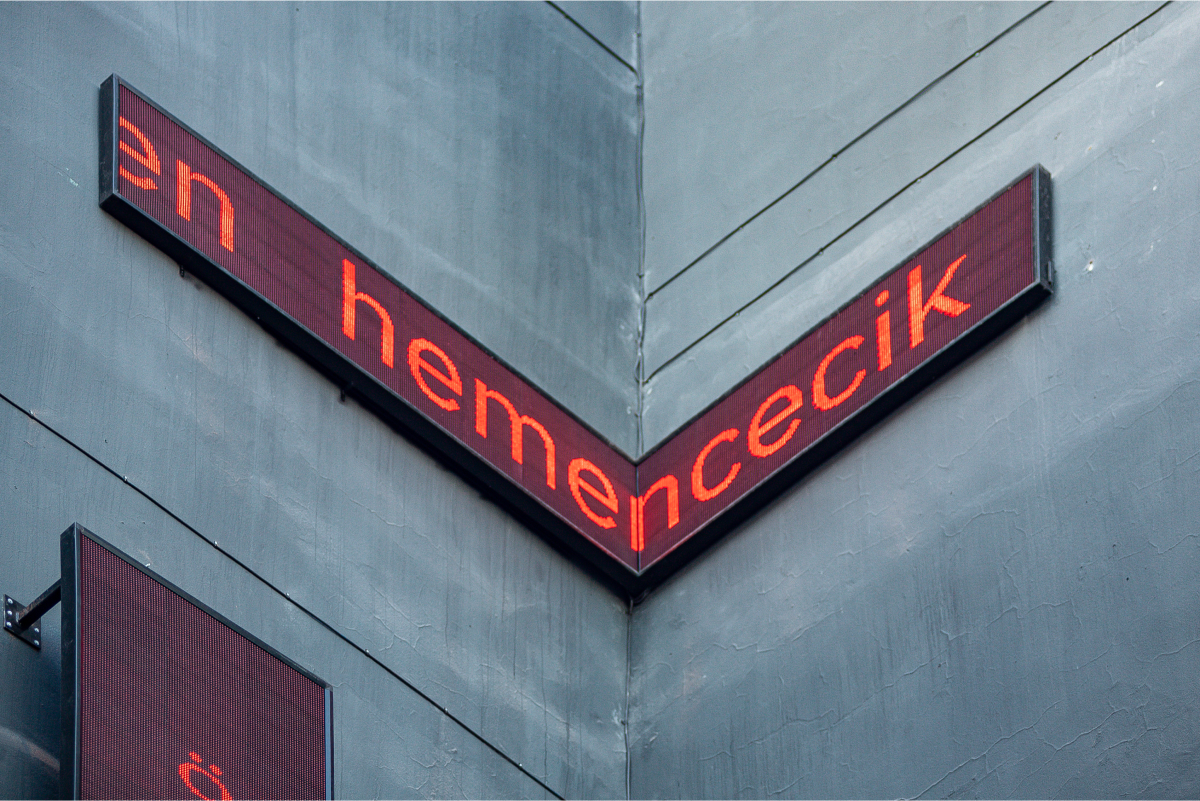 |
Balık Kavağa Çıkınca (When Pigs Fly), April 2023. Photo: Flufoto, by courtesy of Yanköşe.
For Hitit Mod, the artists Avşar Gürpınar and Cansu Cürgen explain the mood of “Balık Kavağa Çıkınca” (When Pigs Fly) as follows:
In mathematics, modes refer to the most repetitive value in a set of data. Temporarily adopting this concept from mathematics, we applied it to the public art project “Balık Kavağa Çıkınca” (When Pigs Fly) by Ambiguous Standards Institute, currently on display at Yanköşe. We can say that the repeating zeros and ones on the LED panels determine the mode of representation for our project. The recurrence of ambiguous time expressions displayed on the screens, facilitated by this digital repetition, constructs a dynamic visual mode. However, the commonality of expressions in this work transcends language alone. There exists a more distinct mode that defines them: Ambiguity.
Ambiguous expressions of time frequently prove useful to us. In certain instances, we favor ambiguity in response to the uncertainty of the world and the relativity of life.
The concept of time has a mathematically precise counterpart on the atomic scale. The second is defined in terms of the fixed numerical value of cesium frequency. However, this precision may not be very effective or necessary to define our perception of time and our relationship with it. In fact, very few of the expressions of time we use in everyday life contain such precision and acuity. When we are running late, we do not articulate our delay in a mathematical manner like “I will be 5 minutes and 48 seconds late for the meeting”, but rather, “I will be there soon”. Similarly, we express a period of time not as “this grocery store has been here for 42 years, 3 months, and 23 days”, but as “this grocery store has been here for as long as I can remember”. Ambiguous expressions of time frequently prove useful to us. In certain instances, we favor ambiguity in response to the uncertainty of the world and the relativity of life. It’s akin to a parent consistently telling their child that there are five minutes left. It’s just “mom’s five minutes”.
In this mood of ambiguity, Balık Kavağa Çıkınca (When Pigs Fly) traces the temporal expressions embedded in language and renders them visible by bringing them together.
As Tanpınar said, “The clock itself is space, its march is time, its gauge is human...”
Ambiguous standards of time also differ categorically. Expressions about the near and distant past (yesterday and ancient history), the near and distant future (imminent and until the end of times), modern time expressions such as “overtime”, “lychnobite”, and all expressions related to the movement of the sun and the cycle of nature such as “harvest time”, “when the crops are ripe”, “cherry season” find their place in the language.
In this city, where people and vehicles race against time, where it is not possible to say anything definite about time and its perception together with space, the vague standards of time whose ambiguity varies quantitatively and qualitatively, appear and disappear endlessly on the walls of Yanköşe. As Tanpınar says, “The clock itself is space, its march is time, its gauge is human... This shows that time and space exist with people!”
This work also exists in time and space only with human beings.
|
Balık Kavağa Çıkınca (When Pigs Fly), April 2023. Photo: Flufoto, by courtesy of Yanköşe. |
The creators of this work, Avşar Gürpınar and Cansu Cürgen, the co-founders of the Ambiguous Standards Institute, are two academicians currently working in the UK.
Cansu Cürgen holds a PhD in architectural design and teaches at the School of Architecture, Building and Civil Engineering at Loughborough University. Her research interests include the political economy of design, everyday life studies, urban interventions, open-source design practices, the history of design standards, and the theory and criticism of modern architecture. Cürgen recently served as the editor and co-curator of “Vardiya”, the Turkey Pavilion of the 16th Architecture Exhibition at the International Venice Biennale. She also co-edited and authored the 4-volume book “Vardiya | The Shift” published by YKY.
Avşar Gürpınar holds a bachelor’s degree in Electrical Engineering, a master’s degree and a PhD in Industrial Design. He is currently a lecturer at the School of Design and Creative Arts at Loughborough University. Recognized in 2021 by the Arts Council England as an “exceptional talent”, Gürpınar is a member of the Design Research Society, a reviewer for The Design Journal, and a design critic contributing to DAMN and MONU. His recent works include the solo exhibition “Kırılan Senin Oyuncağındır” (It Was Your Toy That Was Broken) at Kıraathane İstanbul in 2021.
While most of us have become acquainted with the Ambiguous Standards Institute founded by the duo at the 4th IKSV Istanbul Design Biennale in 2018, the Institute actually commenced its works in 2014 and has conducted numerous research projects on everyday life and design since its inception. The “An Institute Within an Institute” exhibition, organized at the Art Institute of Chicago in 2021, stands as one of the Ambiguous Standards Institute’s most recent works. Notably, some of these works have found a permanent place in the collection of the Art Institute of Chicago.
Thanks to Yanköşe, we have the opportunity to encounter a cross-section of the research conducted by the Ambiguous Standards Institute, which challenges the norms of time, right here in Istanbul. Simply redirect your path to Kabataş to witness a delightful project about time and space. “Now is the time!”


